It's good to know that our scientific knowledge about vitamin B folate has undergone significant changes over the past 10 years based on some astounding scientific studies. We have learned that the biologically active and naturally occurring forms of folate - L-5-methyltetrahydrofolate (5-MTHF) and 5-formyltetrahydrofolate (folinic acid) are much more effective than folic acid, which is a synthetically oxidized form of folate.
For many years (and at least from the 1940s) the only form of folate that was used in supplements and enriched food was folic acid. However, a significant number of studies have shown that supplementation with folic acid can actually accelerate cognitive deficits in some older people. Folic acid is also associated with an increased risk of colorectal cancer, an increased risk of childhood asthma in children of mothers who supplement folic acid and an accelerated increase in existing cancerous tumors.
Many studies indicate that a large part of the population (about 50%) suffers from genetic deficits of enzymes (such as MTHFR) that prevent the body from properly metabolizing folic acid to the forms of coenzymes needed for the proper functioning of the body.
Unfortunately, journalists and even many health care workers have not understood that folic acid is not the same as naturally occurring folate. Even today, the term folic acid and interchangeable is used in the medical environment.But folic acid is not the same as folate!
The good news is that the coenzymes of folate, 5-MTHF and folinic acid are now readily available in nutritional supplements and are beginning to be introduced into products by knowledgeable producers.
Folate is a water-soluble vitamin B that naturally occurs in food. Foliates are commonly consumed in the form of green leafy vegetables, sprouts, fruit, brewer's yeast, animal products such as milk and dairy products, egg yolks or liver. Folian is the general name for both naturally occurring folate in food as well as for folic acid.
When we eat folate with food, they are usually hydrolysed to the form of monoglutamate in the gut before being absorbed by active transport along the intestinal membrane. Passive diffusion also occurs when we take pharmacological doses of folic acid.
Before getting into the bloodstream, the monoglutamate form is reduced to tetrahydrofolate (THF) and converted into methyl or formyl forms. However, both metabolically active forms (coenzymes), 5-methyltetrahydrofolate (5-MTHF) and 5-formyltetradyrofolate (also known as folinic acid) are found in food and can reach cells without additional modifications.
Unfortunately, the folates contained in the food are unstable and susceptible to oxidation;they quickly lose their activity when processing food, production and storage, and the level of their bioavailability is 25-50% depending on the type of food. Fresh, deciduous vegetables stored at room temperature can lose up to 70% of their folate activity in three days and the cooking process in water increases this result to 95%.
People are unable to synthesize folate, and because it is soluble in water, the body can store it to a limited extent.For this reason, folate is a dietary requirement and must be included in the diet.

Folate deficiency is one of the most common nutritional deficiencies and can occur when its intake with diet is insufficient, when the increased demand does not go hand in hand with increased intake (special physiological conditions such as pregnancy, lactation, baby growth) when there is a modified absorption / excretion (or loss) and when the metabolism or consumption of drugs interferes with the body's ability to use folate.
Many factors can lead to folate deficits. These are not only problems with the absorption of enzymes, digestive pathologies or liver disease, but also states associated with high rate of cell turnover, such as rapid tissue growth (infants, children and adolescents), as well as pregnancy and lactation.
In severe cases, deficiencies can cause many clinical abnormalities, such as macrocytic anemia, cardiovascular disease, neural tube defects and neoplasia. The folate deficiency is associated with elevated levels of homocysteine, cerebrovascular and neurological diseases and mood disorders.
The folate coenzymes are responsible for the following benefits and metabolic functions:
- Formation of purines and pyrimidines, which in turn are needed for the synthesis of DNA and RNA nucleic acids.This is particularly important during fetal development in the first trimester to prevent congenital defects, such as a neural tube defect.
- Formation of a heme, an iron-containing protein in hemoglobin.
- Conversion of a three-carbon serine amino acid from a two-carbon amino acid glycine.
- Formation of the amino acid tyrosine from phenylalanine and glutamic acid from histidine.
- The formation of the amino acid methionine from homocysteine (vitamin B12 as methylcobalamin is also needed for this conversion).Elevated levels of homocysteine are associated with a whole range of health disorders, such as atherosclerosis, osteoporosis, Alzheimer's disease or depression.In the reconversion of homocysteine to methionine, the body uses methionine to create an important amino acid, s-adenosylmethionine (SAMe), which is known for its helpful properties in the treatment of depression.
- Synthesis of choline from ethanolamine.
- Formation and maturation of red and white blood cells.
- Conversion of nicotinamide is N'-methyl-nicotinamide.
Many drugs are known for inhibiting the body's ability to use folate, and they are
- aspirin,
- cholesterol-lowering drugs
- oral contraception
- alkalizing agents
- methotrexate used for rheumatoid arthritis
When we take these drugs (and many more), it is recommended to supplement folate, preferably 5-MTHF and folinic acid, at a dose of 800 mcg per day.
When taking folate, it is also recommended to supplement the appropriate doses of vitamin B12 in the form of methylcobalamin.
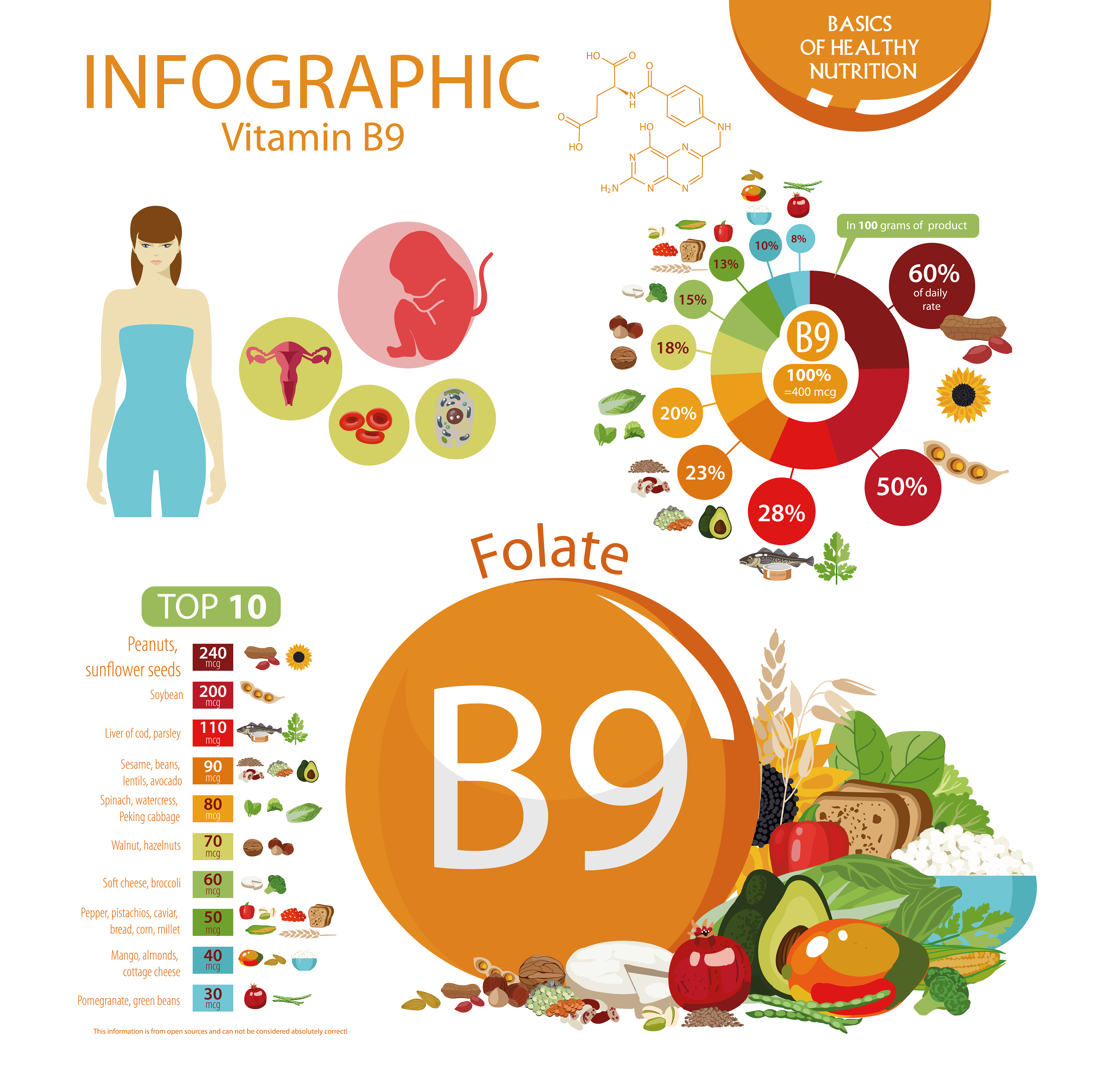
Figure (1.1) below shows an overview of how the three forms of folate that will be referred to are metabolized in cells.Essentially, the diagram shows that there are two main applications of folate in the body 1) related to the methylation reaction and 2) related to nucleotide biosynthesis, e.g. DNA and RNA production.
The bottom left of the diagram shows that 5-MTHF can directly reach the cell and be used in methylation reactions, such as the conversion of homocysteine to methionine.In the lower right part it is shown that 5-formyltetrahydrofolate (folinic acid) can directly enter the cell and be used for nucleotide biosynthesis after several enzymatic transformations.
The upper part of the diagram shows that folic acid can enter the cell, but it has to go through a series of enzymatic conversions to achieve what it reaches 5-MTHF and folinic acid.In the box in the bottom center of the diagram, the MTHFR enzyme deficit (look at line 5) can be shown to block the folic acid metabolism.
The diagram shows that all important reactions can be made by 5-MTHF or folinic acid, because they can be interconverted by a series of enzymatic reactions.One important study indicated that, at least in some cases, the deficiency of the MTHFR enzyme does not impede conversion of folinic acid to 5-MTHF.
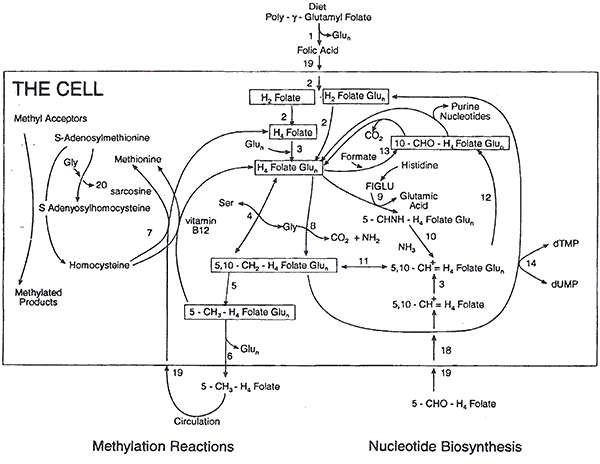
.
At the time of isolation and exposure to air, the natural folates contained in food become unstable and decay and are usually no longer useful. However, a small amount of natural folate can be transformed by oxidation (natural process) into folic acid, a much more stable form, with a very long shelf life.
Because human and animal cells can not themselves use folic acid molecules as part of their normal metabolic processes, human cells (mainly liver cells) can turn folic acid back into many metabolically useful forms of folate. This is why folic acid - despite the fact that it is not found in food - can do so much good. The best known example is the prevention of fetal congenital defects, such as spina bifida, cleft lip and palate.
With age, however, our bodies are slowly transforming folic acid into usefully metabolized folates.This is probably why scientists find that folic acid (not folate) is associated with a decrease in cognitive ability in older people.Some studies have shown significantly elevated levels of unmetabolized (and therefore unusable) folic acid accumulated in the bloodstream of older people who are supplementing it.
In addition to worse folic acid metabolism with age, there is a significant number (up to 45 percent or more in some environments) of human genetic defects related to folate metabolism (deficiency of MTHFR), which makes it difficult, and in certain circumstances prevents people suffering from these defects to do metabolic use of folic acid.
Folate supplements
It is high time that folic acid supplements have become part of the story, and only forms of naturally occurring folate have been used in supplements.Although my company produces a liquid form of folate supplements, which was especially useful for some pregnant women who have had gum problems, we have also been introducing the form of Folin Acid Coenzyme to supplements for more than 10 years, and we have recently introduced the metabolically active form of L- 5-MTHF.
A small amount of folic acid (100-200 mcg, the amount currently found in many multivitamin preparations) is unlikely to be a problem for most people. However, a higher dose taken daily for many years can increase the long-term risk of rectal cancer, decreased cognitive function or other symptoms associated with elevated homocysteine levels.If larger amounts are unavoidable (for example, as long as prenatal vitamins do not change from folic acid to folate), taking additional folate in the form of 5-MTHF and Folinic Acid is most likely to be balanced by the folic acid still present in multivitamins.Therefore, over the past five years I have eliminated folic acid from all the multivitamins and complexes of B vitamins that I had available.
Folinic acid. Also known as 5-formyltetrahydrofolate, it is one of the active forms in the group of vitamins known as folate.In contrast to folic acid, a synthetic form of folate, folinic acid is one of the forms of folate naturally found in food. In our body, folinic acid can be transformed into any other active form of folate.
Compared to folic acid, folinic acid is expensive and costs about 100 times more.However, taking into account the fact that our body needs very small doses (less than 1 mg), we can buy a two-month supply of folinic acid for less than $ 10. Folic acid has been available as a supplement for over 10 years and is the most frequently chosen product replacing folic acid.
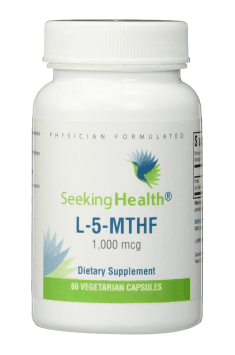
5-MTHF also known as L-5-methyltetrahydrofolate, until recently it was very difficult to obtain.An Italian company has created a patented available form (Quatrefolic®) which is combined with vegetarian glucosamine.This form is particularly stable and bioavailable. 5-MTHF costs about 400 times more than folic acid, but because our body needs less than one milligram (1 mg) per day, you can buy a two-month supply for around $ 20. 5-MTHF is now easily available on the market, so you can purchase both forms of folate at a reasonable price.
As we have seen, the importance of natural forms of folate coenzymes is emphasized by many people who can not convert folic acid to folate useful for the body, because they lack the enzymes needed for such conversion due to genetics, age or faulty metabolism.
More than half of humanity (in some populations) having a functional variant (i.e. a mutation) of the MTHFR gene that causes a deficiency of MTHFR is unable to convert folic acid to folate forms such as 5-MTHF, which are used by cells.This not only means that their organisms have problems processing B vitamins, but also that they suffer from significant deficiencies (as well as increased levels of folate in the blood).
Folate deficiencies can lead to panic and panic attacks. In addition, they may involve other mood disruptions, miscarriages and vascular problems. Remember that the elevated level of homocysteine is associated with folate deficiency.
Another range of research indicates that 20% of people who have the MTHFR gene experience migraine headaches.
The effectiveness of natural folates in the treatment of migraine in people suffering from MTHFR deficiency is becoming more and more known. There is even a TEDx lecture delivered by Prof.Lyn Griffiths of the Griffith Health Center in Australia, showing her work on MTHFR deficiency and migraine (https://www.youtube.com/watch?v=BOgbmF0jYd4). This aspect of her work is marked at the end of the lecture.
The use of natural folates to help people suffering from migraine headaches is a very promising field of research.
Folic acid is not the same as folate.Folic acid can cause problems for people who lack the enzymes necessary to convert this acid to useful forms. Folic acid can also accumulate in the body in a potentially toxic way. Supplementation containing naturally occurring folate coenzymes such as 5-MTHF and folinic acid is very sensible considering our understanding of how the body uses folates.


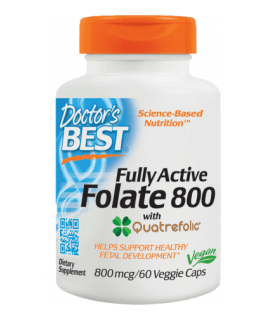
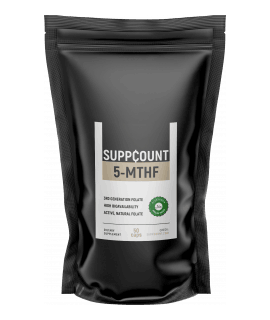






2 Comments